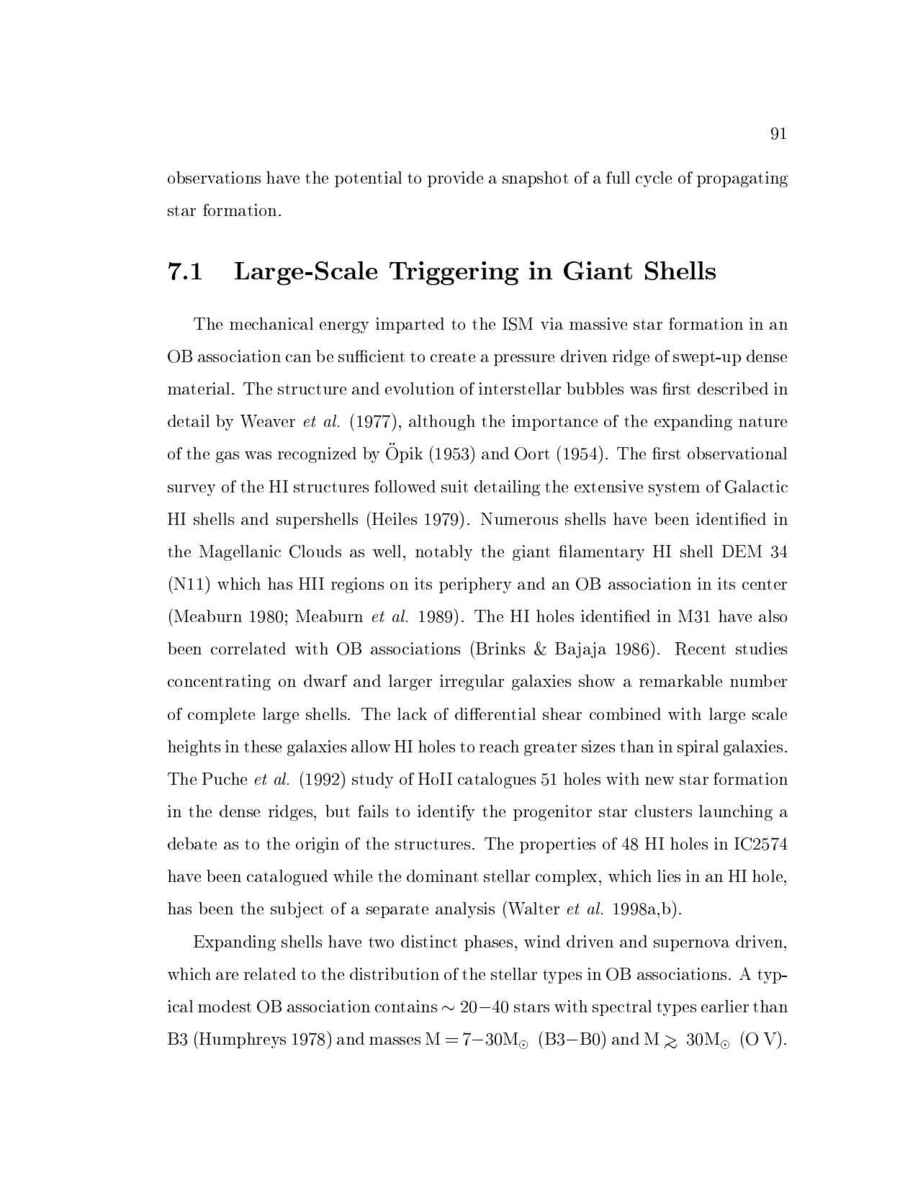
91
observations have the potential to provide a snapshot of a full cycle of propagating
star formation.
7.1
Large-Scale
T
riggering
in
Gian
t
Shells
The mechanical energy imparted to the ISM via massive star formation in an
OB association can be su cient to create a pressure driven ridge of swept-up dense
material. The structure and evolution of interstellar bubbles was rst described in
detail by Weaver
et
al.
1977, although the importance of the expanding nature
of the gas was recognized by Opik 1953 and Oort 1954. The rst observational
survey of the HI structures followed suit detailing the extensive system of Galactic
HI shells and supershells Heiles 1979. Numerous shells have been identi ed in
the Magellanic Clouds as well, notably the giant lamentary HI shell DEM 34
N11 which has HII regions on its periphery and an OB association in its center
Meaburn 1980; Meaburn
et
al.
1989. The HI holes identi ed in M31 have also
been correlated with OB associations Brinks & Bajaja 1986. Recent studies
concentrating on dwarf and larger irregular galaxies show a remarkable number
of complete large shells. The lack of di erential shear combined with large scale
heights in these galaxies allow HI holes to reach greater sizes than in spiral galaxies.
The Puche
et
al.
1992 study of HoII catalogues 51 holes with new star formation
in the dense ridges, but fails to identify the progenitor star clusters launching a
debate as to the origin of the structures. The properties of 48 HI holes in IC2574
have been catalogued while the dominant stellar complex, which lies in an HI hole,
has been the subject of a separate analysis Walter
et
al.
1998a,b.
Expanding shells have two distinct phases, wind driven and supernova driven,
which are related to the distribution of the stellar types in OB associations. A typ-
ical modest OB association contains
20
,
40 stars with spectral types earlier than
B3 Humphreys 1978 and masses M = 7
,
30M B3
,
B0 and M
30M O V.
